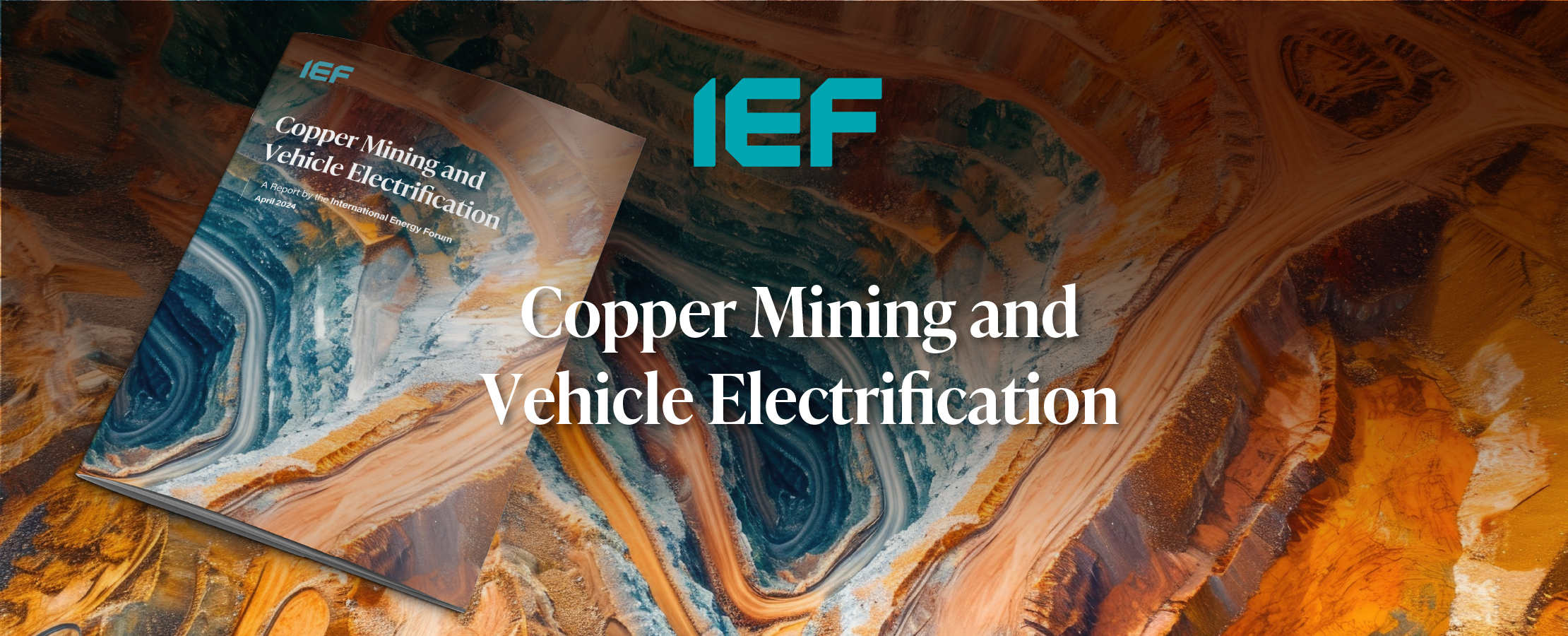Copper Mining and Vehicle Electrification
Introduction
Copper is the mineral most fundamental to the human future because it is essential to electricity generation, distribution, and storage. Copper availability and demand determine the rate of electrification, which is the foundation of current climate policy. Many studies have raised concerns that copper supply cannot meet the copper demands of both the green energy transition and equitable global development, but the seemingly universal presumption persists that the copper needed for the green transition will somehow be available. This need not be the case for even the first step of vehicle electrification.
This paper addresses this issue by projecting copper supply and demand from 2018 to 2050 and placing both in the historical context of copper mine output. Discussion is focused on a single diagram that illustrates the unprecedented nature of the copper mining challenge and ways to reduce copper demand.
Just to meet business-as-usual trends, 115% more copper must be mined in the next 30 years than has been mined historically until now. To electrify the global vehicle fleet requires bringing into production 55% more new mines than would otherwise be needed. On the other hand, hybrid electric vehicle manufacture would require negligible extra copper mining.
The figure summarizes projections of both demand and supply in a fashion that has not been done before and we discuss aspects of copper exploration that have not seen much discussion. Our main purpose, however, is to communicate the magnitude of the copper mining challenge to the broader public that is less familiar with upstream resource issues. To this end, the discussion is brief, non-technical, and focused on a single metal, diagram, and issue (vehicle electrification). All relevant methods and data are concisely provided in supplemental material.
We hope this will promote discussion and formulation of alternative policies to be certain the developing world can catch up with the developed world while global initiatives advance with the green energy transition.
Key Chart
Figure 1 - (A) Historic and projected mined copper production. (B) Copper mine production requirement scenarios.
 Download Figure 1
Download Figure 1 (A) Historic and projected mined copper production (orange and teal-colored curves). The refinery output that includes recycling and equals the copper supply is shown by the dark blue curve and green curve. The green curve assumes a recycling rate equal to that in 2018. The dark blue solid curve assumes recycling rate increases along the trends of the past 20 years to 2050 and then is constant. Qdate indicates the tonnes of copper mined up to a particular date and equals the area under the teal curve up to that date. The copper production rates (mine or refinery) are also shown. Qt at the bottom right is the estimated total minable copper resource.
(B) Curves showing the copper mine production required to:
- Meet business-as-usual (non-energy transition purposes) demand5 (solid dark blue baseline).
- Meet BasU demand and convert the global vehicle fleet to hybrid electric vehicles (yellow hybrid line just above the dark blue baseline).
- Meet BasU demand and convert the global vehicle fleet to battery electric vehicles (teal EV curve) and upgrading electricity and transmission (light blue EV+grid).
- Supply the copper needed to transition to net zero CO2 emissions (wind and solar rather than fossil fuels) by 2050 (green line). (Panel curves calculated and plotted in SM4 tabs 1 and 5.)
About the International Energy Forum
The International Energy Forum (IEF) is the world's largest international organization of energy ministers from 72 countries and includes both producing and consuming nations. The IEF has a broad mandate to examine all energy issues, including oil and gas, clean and renewable energy, sustainability, energy transitions and new technologies, data transparency, and energy access. Through the Forum and its associated events, officials, industry executives, and other experts engage in a dialogue of increasing importance to global energy security and sustainability.
About the Authors
Lawrence M. Cathles
Cornell University, New York
After doctoral research on the viscosity of the earth's mantle at Princeton University, Cathles spent periods at Kennecott Copper Corporation's Ledgemont Laboratory, The Pennsylvania State University, and the Chevron Oil Field Research Laboratory before joining the faculty of Cornell University in 1986 and becoming professor emeritus in 2018. Larry co-directed the Global Basins Research Network, was the 24th Hugh Exton McKinstry Memorial Lecturer (1989) at Harvard, and the 2008 Adrian Smith Lecturer at the University of Waterloo. He was the 2011 Distinguished Lecturer and the 2021 Penrose Gold Medal recipient of the Society of Economic Geologists and is a fellow of the American Association of the Advancement of Science. He was a leader of the oil and gas thrust of the Cornell KAUST program, and a Director of Cornell's Institute for the Study of the Continents. He has published over 140 peer-reviewed publications and a book: "The Viscosity or the Earth's Mantle".
Adam C. Simon
University of Michigan, Michigan
Adam is Arthur F. Thurnau Professor of Earth & Environmental Sciences at the University of Michigan and a Fellow of the Society of Economic Geologists. His research focuses on the geology and geochemistry of mineral deposits that provide society with copper and other critical minerals. Adam has led research programs on all seven continents. He has co-authored the textbooks Mineral Resources, Economics and the Environment, which is considered an authoritative source for beginners and experts, and Earth Materials: Components of a Diverse Planet. He has published 100 peer-reviewed research articles and has received awards for his transformative approaches to education including the University of Michigan Teaching Innovation Prize and the Distinguished Teaching Professor from the University of Nevada Las Vegas. He regularly delivers lectures to the general public and experts on all aspects of the energy transition including a TEDx talk. He is the 2024 Society of Economic Geologists Distinguished Lecturer.







